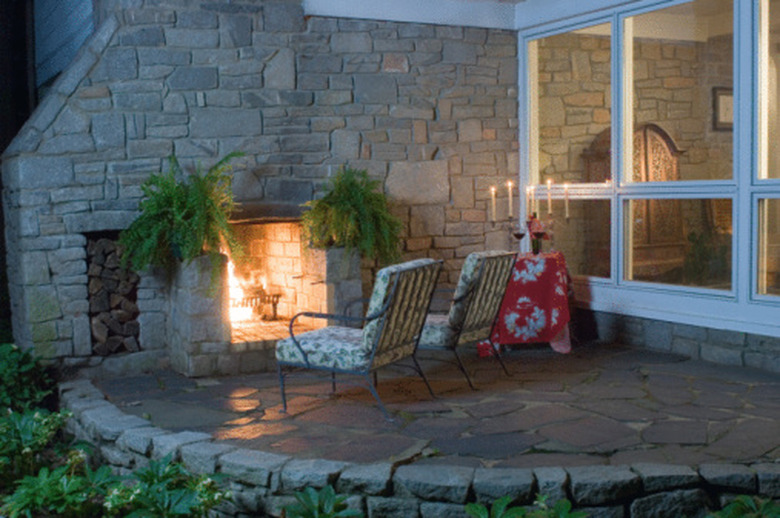Can You Use Pea Gravel Under A Patio?
Pea gravel is a loose landscaping material composed of smooth, rounded stones between 1/8 and 1/4 inch. While pea gravel can be used as a mulch alternative, garden border and other landscaping purposes, it is not the best choice for a patio base. If you use pea gravel beneath a patio, take a few simple steps to ensure the stability of the base before setting your surface stones, pavers or bricks.
Tips
Tips
One of the best ways to ensure the stability of a patio is to compact the subsoil. Compacting loose dirt before adding pea gravel on top removes air pockets and releases excess moisture from the ground. Use a hand tamper or a compactor machine, and go over the entire bottom of the foundation until your shoes don't leave footprints. Before adding pea gravel into the foundation, frame the inner walls with pressure-treated wood boards. The boards will act as edge restraints, reinforcing the gravel base on all sides.
Stone Dust
Stone Dust
Pack is a mix of gravel and stone dust used to form a solid surface beneath mulch and river rock patios. Adding stone dust is one way to stabilize pea gravel and form a similar base. The stone dust will fall into the crevices and reinforce the rocks so they don't shift. Pour stone dust over pea gravel, and rake the rocks to work the stone dust down. Moisten the base, and continue adding more stone dust until it levels across the top. The dust will cling to pea gravel as it dries, creating traction between the smooth rocks and locking them in place.
Benefits
Benefits
The primary functions of a patio base include facilitating underground drainage and supporting the surface material so it doesn't sink. A 4- to 6-inch layer of compacted pea gravel can support a patio surface under normal wear and tear. The small size of pea gravel rocks prevents large air pockets, which reduces the possibility of frost heave damage. The rounded shapes leave narrow gaps, providing multiple paths for underground moisture to escape from beneath the surface.
Considerations
Considerations
Whether you intend to set the surface in sand or mortar, a patio is only as strong as its foundation. Typically, a gravel base is composed of irregularly-shaped 3/4-inch crushed rocks that wedge into a solid surface when compacted. The round, smooth edges of pea gravel prevent these stones from compacting as firmly. As a result, natural stones or bricks set on a base of pea gravel can rotate or shift out of place over time if additional steps aren't take to ensure stability.
